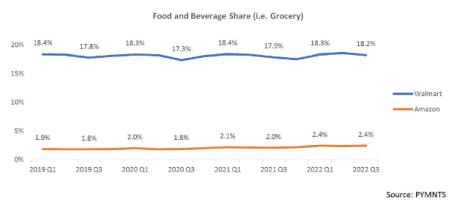
If loving Walmart was the only job criteria to be CEO of the largest U.S. retailer, then by that measure alone Doug McMillon would be a slam dunk.
With news out today that the 56-year-old executive is reportedly planning to extend his nine-year tenure as CEO that began in February of 2014 “for at least three more years,” it warrants looking at the past, present and future for Walmart and its stake in the broader retail landscape.
As anyone who has ever heard him speak will attest, McMillon openly gushes about his affection for the company, its culture, customers and million-plus associates, or the fact that the retailer has taken him around the world and is also the only place he’s ever worked since his family moved to Bentonville, Arkansas when he was a teen.
“I think the three headlines are strong results, great team, bright future,” McMillon said in his closing remarks on the company’s Q4 earnings call two weeks ago.
“We’re on our front foot as we start the year,” he added, always thanking his team — with trademark gentle drawl — for their hustle and flexibility in the face of never-ending change and challenge.
“As it relates to having a great team, just look at what they did last year,” he said. “When the world changed, they moved quickly at scale to deal with issues. They got them resolved. Q3 was better, Q4 even stronger. And as it relates to our future, we’re now positioned to serve the customer how they like to be served, stronger on convenience, as well as being known for value.”
Whether it’s at one of Walmart’s 11,000 stores or clubs, via pickup or delivery, McMillon continued, “the business model is changing, and some of the things we’ve been working on for these last few years are starting to scale, and we’re excited about that.”
For the record, Walmart said only that it had not issued any statement before or after the WSJ’s report that cites unnamed company sources.
While there is unquestionably always more work to be done at a global operation like Walmart, especially in light of mounting threats to its core grocery franchise from Amazon as well as traditional pure-play supermarket chains, the Supercenter leader is not standing still in the so-called food fight.
As PYMNTS reported this week, the addition of more Sam’s Club warehouse store locations is just one way the retail giant is stepping up its offensive game to maintain its market leadership role in food and beverage.

As PYMNTS data shows, Walmart’s lead over Amazon in food and beverage is not only substantial but has barely budged since the eCommerce giant purchased the 500-plus store Whole Foods chain in 2017. And while Amazon is actively pursuing the addition of more physical stores and under its Fresh brand, the reality of Walmart’s 5,000 domestic locations is a serious physical mote that will not be easily cleared.
While groceries are not the most profitable business, they are an excellent and proven driver of foot traffic and one of the main reasons why Walmart and Amazon mentioned the category a combined 28 times on their respective Q4 earnings calls.
There’s also the perishable reality around food. As PYMNTS’ new survey of 2,400 consumers for the “Changes in Grocery Shopping Habits and Perception” report found, over half of respondents said that while they liked the convenience of online grocery shopping, 44% still make the majority of their purchases in-store, including 54% who do so for fresh meat and fish and 53% prefer picking their own fruits and vegetables in a physical store.
In the meantime, the two retail titans are fully focused on navigating a tricky economy and an increasingly discerning consumer in a shifting purchase decision equation between price, convenience and availability.
To that point, Amazon has reportedly increased its investment into ultrafast delivery, via plans to triple its network of locations to 150 over the next few years in major urban centers.
At the same time, Walmart continues its efforts this week to keep its marketplace stocked with new items and vendors via a new lending partnership with Citigroup aimed at bringing better access to capital and borrowing terms to roughly 10,000 U.S. suppliers.